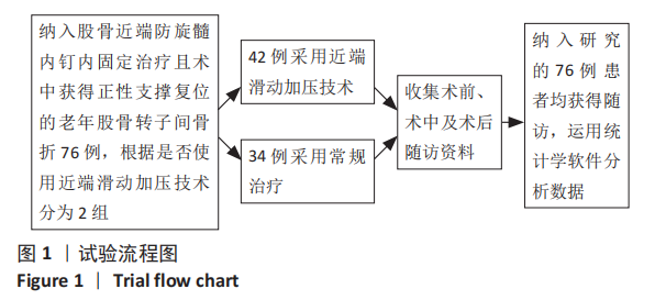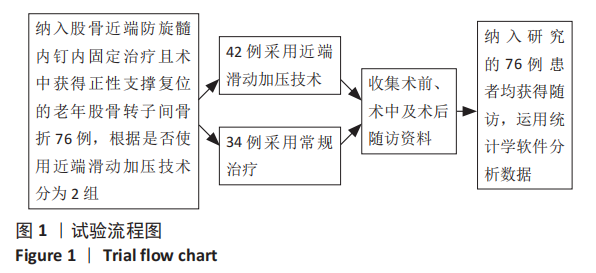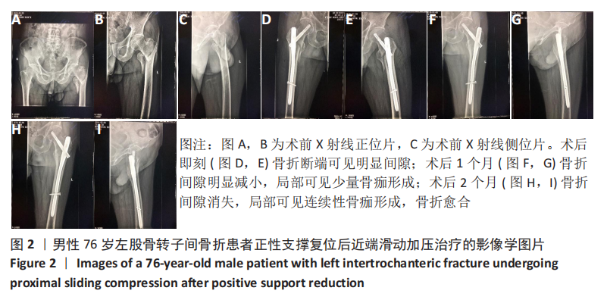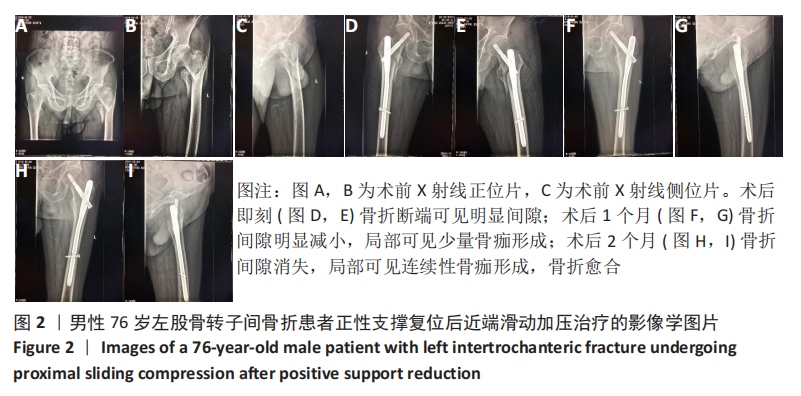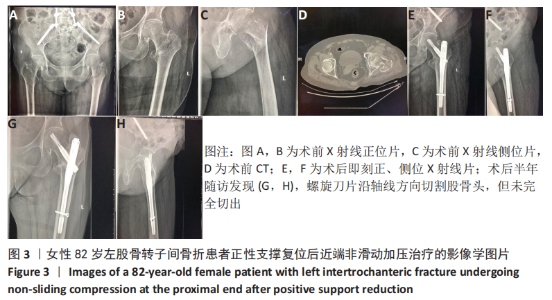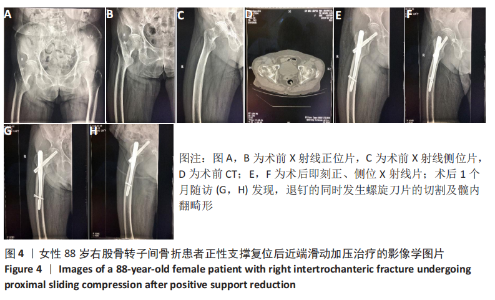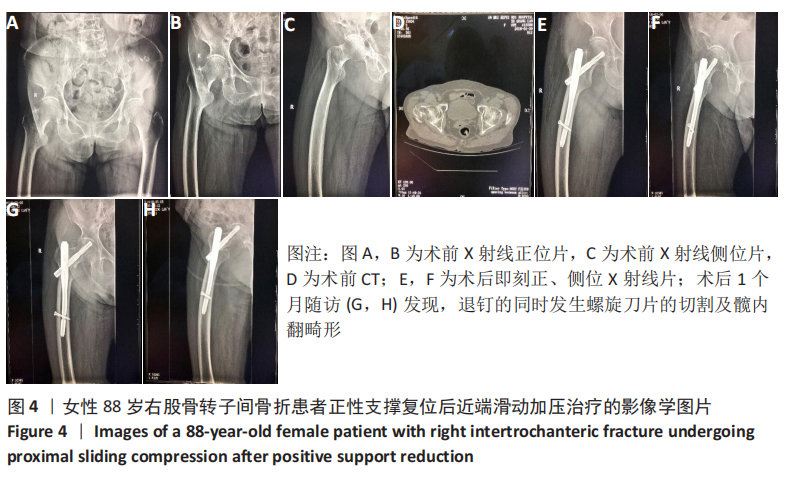[1] COURT-BROWN CM, CAESAR B. Epidemiology of adult fractures: A review. Injury. 2006;37(8):691-697.
[2] KANNUS P, LEIPONEN P, PARKKARI J, et al. A sideways fall and hip fracture. Bone. 2006;39(2):383-384.
[3] 张飞,马少华,张浩,等. InterTan与PFNA内固定治疗老年股骨粗隆间骨折的比较[J]. 中国骨与关节损伤杂志,2020,35(2):174-176.
[4] KONSTANTINIDIS L, GRÜNEWALD H, HAUSCHILD O, et al. Sliding of the load carrier in third-generation intramedullary nails for proximal femur fractures: An in vitro mechanical comparison study. Proc Inst Mech Eng H. 2015;229(2):110-114.
[5] KELLAM JF, MEINBERG EG, AGEL J, et al. Introduction: Fracture and Dislocation Classification Compendium-2018: International Comprehensive Classification of Fractures and Dislocations Committee. J Orthop Trauma. 2018;(Suppl 1):S1-S10.
[6] PEREZ EA, JAHANGIR AA, MASHRU RP, et al. Is there a gluteus medius tendon injury during reaming through a modified medial trochanteric portal? A cadaver study. J Orthop Trauma. 2007;21(9):617-620.
[7] KIM Y, DHEEP K, LEE J, et al. Hook leverage technique for reduction of intertrochanteric fracture. Injury. 2014;45(6):1006-1010.
[8] PISANI P, RENNA MD, CONVERSANO F, et al. Major osteoporotic fragility fractures: Risk factor updates and societal impact. World J Orthop. 2016;7(3):171-181.
[9] 唐佩福. 老年髋部骨折的诊治现状与进展[J]. 中华创伤骨科杂志, 2020,22(3):197-198.
[10] CRAWFORD CH, MALKANI AL, CORDRAY S, et al. The Trochanteric Nail versus the Sliding Hip Screw for Intertrochanteric Hip Fractures: A Review of 93 Cases. J Trauma. 2006;60(2):325-329.
[11] SKALA-ROSENBAUM J, BARTONICEK J, BARTOSKA R. Is distal locking with IMHN necessary in every pertrochanteric fracture? Int Orthop. 2010;34(7):1041-1047.
[12] TAN BY, LAU AC, KWEK EB. Morphology and fixation pitfalls of a highly unstable intertrochanteric fracture variant. J Orthop Surg (Hong Kong). 2015;23(2):142-145.
[13] 徐锴,李开南. 股骨近端内侧支撑固定的有限元分析[J]. 中华创伤骨科杂志,2020,22(1):72-73.
[14] 张世民,张英琪,李清,等. 内侧皮质正性支撑复位对老年股骨粗隆间骨折内固定效果的影响[J]. 中国矫形外科杂志,2014,22(14): 1256-1261.
[15] CHANG S, ZHANG Y, MA Z, et al. Fracture reduction with positive medial cortical support: a key element in stability reconstruction for the unstable pertrochanteric hip fractures. Arch Orthop Trauma Surg. 2015;135(6):811-818.
[16] CHANG SM, ZHANG YQ, DU SC, et al. Anteromedial cortical support reduction in unstable pertrochanteric fractures: a comparison of intra-operative fluoroscopy and post-operative three dimensional computerised tomography reconstruction. Int Orthop. 2018;42(1): 183-189.
[17] 李双,张世民,张立智,等.不同组合前内侧皮质支撑复位对股骨转子间骨折髓内钉术后稳定性影响的生物力学研究[J]. 中华创伤骨科杂志,2019,21(1):57-64.
[18] 冼树强,李学良,潘德悦.阳性支撑对股骨粗隆间骨折内固定效果的影响[J].创伤外科杂志,2018,20(10):770-773.
[19] O’MALLEY MJ, KANG KK, AZER E, et al. Wedge effect following intramedullary hip screw fixation of intertrochanteric proximal femur fracture. Arch Orthop Trauma Surg. 2015;135(10):1343-1347.
[20] 陈宾,林凤飞,林朝晖,等. 股骨近端防旋髓内钉滑动加压技术治疗老年股骨转子间骨折[J]. 中华创伤骨科杂志,2019,21(9):764-770.
[21] LIU W, ZHOU D, LIU F, et al. Mechanical complications of intertrochanteric hip fractures treated with trochanteric femoral nails. J Trauma Acute Care Surg. 2013;75(2):304-310.
[22] KIM Y, BAHK WJ, YOON YC, et al. Radiologic healing of lateral femoral wall fragments after intramedullary nail fixation for A3.3 intertrochanteric fractures. Arch Orthop Trauma Surg. 2015;135(10): 1349-1356.
[23] 曹兴兵,吕斌,许腊梅,等.PFNA治疗股骨转子间骨折刀片过度侧方滑移的危险因素分析[J]. 南京医科大学学报(自然科学版),2018, 38(3):351-355.
[24] RUBIO-AVILA J, MADDEN K, SIMUNOVIC N, et al. Tip to apex distance in femoral intertrochanteric fractures: a systematic review. J Orthop Sci. 2013;18(4):592-598.
[25] 林伟鹏,叶劲,邹仲兵,等. 闭合复位内固定治疗老年股骨转子间骨折术后内固定失败的影响因素分析[J]. 中华创伤骨科杂志,2016, 18(7):625-629.
[26] 王勇,潘骏.标准骨水泥强化型PFNA治疗老年股骨粗隆间不稳定骨折[J].中国矫形外科杂志,2018,26(18):1653-1658.
[27] FENSKY F, NUCHTERN JV, KOLB JP, et al. Cement augmentation of the proximal femoral nail antirotation for the treatment of osteoporotic pertrochanteric fractures--a biomechanical cadaver study. Injury. 2013;44(6):802-807.
[28] KANAKARIS NK, TOSOUNIDIS TH, GIANNOUDIS PV. Nailing intertrochanteric hip fractures: short versus long; locked versus nonlocked. J Orthop Trauma. 2015;29 Suppl 4:S10-S16.
[29] 胡侦明,罗先正. 髋关节的生物力学[J]. 中华骨科杂志,2006,26(7): 498-500.
[30] 姜钰,吴新宝. 髋臼骨折内固定的生物力学研究进展[J]. 中华创伤骨科杂志,2015,17(8):682-686.
[31] 郑利钦,陈心敏,张彪,等. 股骨转子间骨折股骨近端防旋髓内钉内固定切割失效的有限元仿真[J]. 中国组织工程研究,2019,23(36): 5794-5799.
[32] SHARMA G, KUMAR GNK, YADAV S, et al. Pertrochanteric fractures (AO/OTA 31-A1 and A2) not amenable to closed reduction: causes of irreducibility. Injury. 2014;45(12):1950-1957.
[33] 佟大可,丁文彬,王光超,等. 难复性股骨转子间骨折的临床分型与治疗[J]. 中华创伤骨科杂志,2017,19(2):109-114.
[34] ULMAR B, SIMON S, STRATOS I, et al. Repositioning, reduction and surgical approaches for subtrochanteric femoral fractures. Unfallchirurg. 2013;116(12):1115-1122.
[35] 郑占乐,刘欢,于贤,等. 股骨近端防旋髓内钉专用球头改锥复位难复性股骨转子间骨折临床研究[J]. 中国修复重建外科杂志,2019, 33(10):1250-1253.
|
